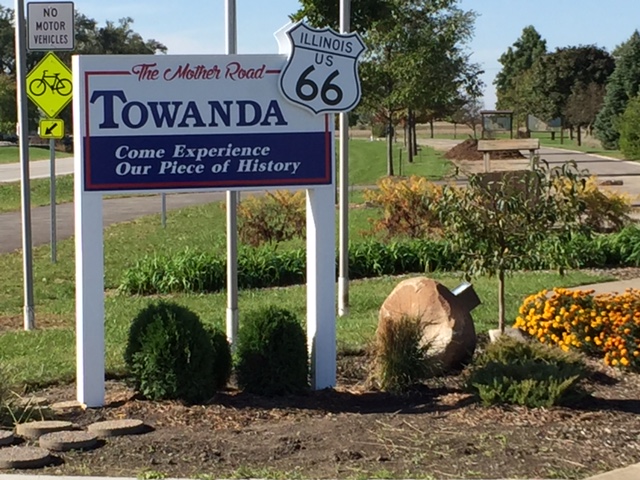We really enjoyed our stop in Springfield, Illinois. There’s so much to see that you could easily spend a day here, but we spent just a few hours in the morning. We decided our priority would be the Abraham Lincoln Presidential Library and Museum. That turned out to be a good decision--it’s one of the best museums we’ve ever seen.
Springfield, Illinois, is big enough that you have to hunt for parking downtown. Because we arrived early in the morning, we found free parking near the Lincoln Home Visitor Center, on South 7th Street between East Capitol Avenue and East Edwards Street.
 |
| Lincoln Home Visitor Center (from recreation.gov) |
We stopped first at the Visitor Center to pick up information on local sights, then we walked about five blocks north to the Abraham Lincoln Presidential Library and Museum. The entrance is at the corner of North 6th Street and East Jefferson Street.
 |
| Abraham Lincoln Presidential Library & Museum |
Inside, a very friendly guide ushered us into a huge atrium and pointed out where we could start our self-guided tour. My husband took this 360-degre panoramic shot of the atrium. The floor tile is actually laid out like a star, but in this shot it's a cool optical illusion!
 |
| 360-degree view of the Lincoln Presidential Museum atrium |
The entrance into the atrium is in the center of this photo. On the far right is a recreation of the Lincoln’s cabin. From there the tour goes through recreations of several scenes in Lincoln’s life plus rooms with all kinds of interesting artifacts. The tour exits next to the model White House on the left. Those are mannequins of Lincoln and his family on the left; visitors posed with them for selfies.
Each stop on the tour was fascinating. I was surprised how much we learned about Lincoln. I had no idea how controversial the Emacipation Proclamation was.
The atrium also featured a live musician playing period music.
 |
| Musician in the atrium of the Abraham Lincoln Presidential Museum |
Then, an unexpected treat: We toured the “State of Sound” special exhibit on Illinois musicians. We could see videos and artifacts of Illinois musicians from practically every possible music genre. My husband especially enjoyed the Chicago blues exhibit, and my favorite was a video clip of Steve Goodman in the folk music exhibit.
We then walked back to the Lincoln Home, on South 8th Street, between East Capitol Avenue and East Jackson Street.
 |
| Lincoln Home in Springfield IL |
The buildings around the Lincoln Home has been preserved to look like they did in Lincoln’s time, so the street is like stepping back in time.
If you’re interested in Lincoln, there’s a lot more to see in Springfield, most within walking distance: a recreation of his law offices, the train depot where he left for Washington, the church he worshipped at, and the State Capitol where he served. Lincoln’s tomb is a mile or two north.
Springfield also has three iconic Route 66 restaurants, all serving Springfield specialities. The 1926 Maid-Rite Sandwich Shop is at 118 North Pasfield Street.
 |
| Maid-Rite Sandwich Shop in Springfield, Illinois (from SangamonCountyHistory.org) |
Maid Rite is known for “loose” hamburger sandwiches—not formed into patties.
Just a few blocks south of the Lincoln Home is the Chili Parlor at 820 South 9th Street. (Some resources call it Joe Roger’s Chili Parlor.)
The Chili Parlor serves
Springfield chilli—yes, they spell it with two Ls.
 |
| Cozy Dog Drive In in Springfield, Illinois (from route66guide.com) |
Unfortunately, we finished our visit to Springfield in the morning, too early to stop at any of these places for lunch. If we had stayed for lunch, I don't know which place we would gave gone to--they're all really special!
On our way out of
Springfield, we saw one more Route 66 treat: the Lauterbach Giant at 1569
Wabash Avenue. (Some resources say it is in Jerome rather than Springfield.)
 |
| Lauterbach Giant on Wabash Avenue in Springfield, Illinois |
This is one of the “muffler men” we first saw in Wilmington, Illinois.
South of Springfield, Illinois, we faced a choice of Route 66 routes, which I’ll share in my next blog post.





















